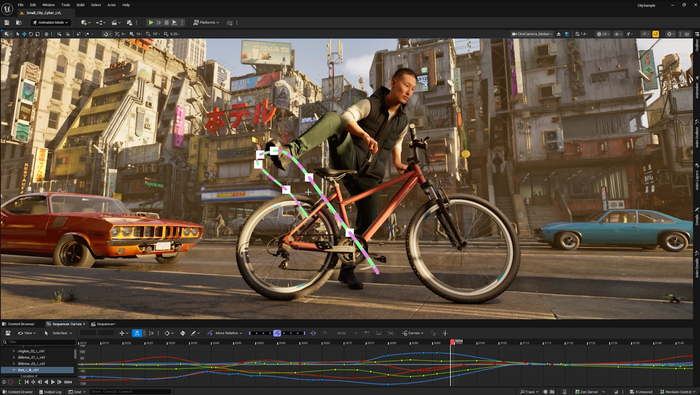Epic Games collaborated with CD Projekt Red during its latest State of Unreal showcase to spotlight the open world credentials of Unreal Engine 5.6 (UE 5.6)—and tease what future versions of the engine might have in store.
The show kicked off with an impressive technical demo that laid out how CD Projekt Red has been leveraging Unreal Engine to craft the world of The Witcher 4.
This wasn’t our first glimpse at The Witcher 4 itself, but rather a technical showreel designed to spotlight specific UE technology. The demo provided an early look at some of UE 5.6’s new open-world features in action, all running on PlayStation 5 at 60 frames per second with raytracing.
That includes a glimpse of the Fast Geometry Streaming Plugin, which offers a faster way to load open worlds. A scene showing Ciri exploring a bustling market town offered a look at how 5.6 handles busy environments full of high-fidelity characters and visual effects such as ML Deformer.
The demo also included an early look at Nanite Foliage, which Epic says will enable devs quickly and efficiently fill scenes with dense, high-fidelity foliage. Nanite Foliage is slated for release in UE 5.7.
You can watch the full tech demo below.
Unreal Engine 5.6 includes “truly engine-first” animation and rigging workflows
In addition to sending the internet into overdrive with that peek at The Witcher 4, Epic also confirmed that UE 5.6 is now available for download and chock full of other features.
The company said it made major strides towards implementing “truly engine-first” animation and rigging workflows, reducing the need for DCC round-tripping. For instance, UE 5.6 will give developers the ability to edit animations visually and intuitively with redesigned Motion Trails.
“Unified for both actors and character controls, you can adjust your arcs and spacing directly in the viewport; choose from styles like Dashed, Time-based, and Heat/Speed mode; and access features that include pinning, offsets, and spaces for even more precision,” explained Epic.
“Tween Tools have also been revamped to enable you to fine-tune animation on controls or selected keys more quickly. We’ve also added new Hotkeys to control the sliders indirectly, as well as the ability to toggle between different slider types and switch into Overshoot mode. And, with the addition of the new Time Offset slider, you can create and edit with even greater control.”

Other experimental features will enable more in-editor rigging workflows, with developers now able to create and sculpt morph targets directly in-editor with the Skeletal Mesh Editor. It’s also possible to use Control Rig Physics to add procedural physics motion to character rigs for more dynamic movement, while the addition of a new built-in rag doll physics feature within rigs can be used to create “lifelike responsive animations.”
Those tools were showcased during The Witcher 4 tech demo, where they were used to breathe life into Ciri’s trusty steed, Kelpie.
Other notable additions to UE 5.6 include an improved MetaHuman Animator capable of capturing actors’ performances in real time on most webcams and smartphones, as well as from audio. New licensing options in the UE EULA will also enable MetaHumans to be used with any engine or creative software.
Epic claims a simplified UX/UI experience will also deliver faster workflows, smarter content organization, and quicker access to tools. It also said an enhanced procedural generation framework will help developers create worlds and manage complex scenes efficiently and with better GPU-driven performance.
That really is just the tip of the iceberg where UE 5.6 is concerned. For more information on the latest release, head on over to the Unreal Engine blog or check out the release notes for the complete feature list.



